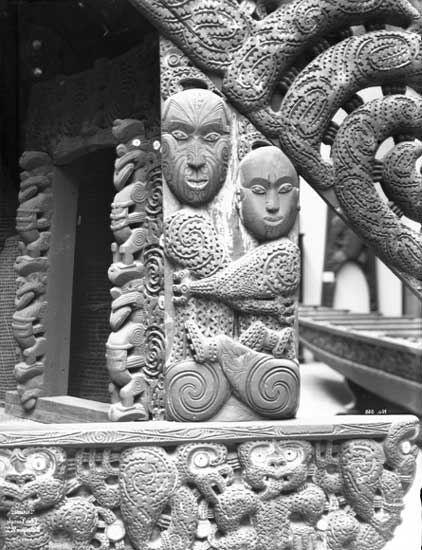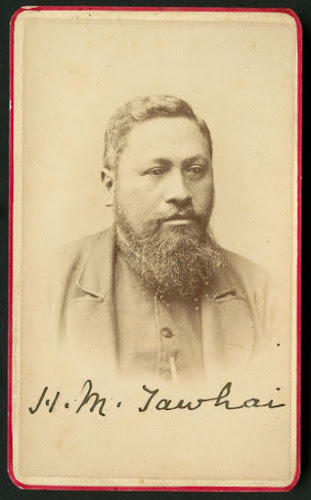Flying the Flag: The Maiki Hill Flagstaff, Kororareka
Hone Heke was a
man of his word. He had promised the governor he would put up a new flagstaff
on Maiki Hill after felling the old one in July 1844. But that didn’t mean he
wouldn’t chop it down again if necessary. And again, and again. Down she came.
For the fourth time. It was March 1845.
 |
| Heke Fells the Flagstaff at Kororareka, A-004-037, ATL |
Pandemonium ensued.
A smoker dropped ash on some kegs of gunpowder, causing the whole magazine to
blow. Heke had no truck with the settlers. His warriors even helped some of
them flee town. But now it was too late to go back. It was a question of mana.
Kororareka. The
Hell-hole of the Pacific, they reckoned. Today it is refined, posh Russell. But
the past lingers everywhere. It’s like a living museum.
The British never
did re-erect their flagstaff. Maori did it instead, in 1858. They had made
their point. The flagstaff would be a token of reconciliation, not a symbol of
sovereignty. They called it ‘Te Whakakotahitanga’, the binding together. The
government preferred to see it as a sign of submission. Ngapuhi had finally decided
to bow to a superior power.
 |
| The Flagstaff before its partial destruction in 1913 |
But Maori were
being driven out of the town. By the 1860s the land had nearly all passed to
the Pakeha. The dodgy grog-sellers of old had given way to a more respectable
class of settler — god fearing and upright, unfamiliar with the old days when
Maori were a force to be reckoned with. Back then, it wasn’t a case of
political correctness. You could get into a lot of trouble if you didn’t abide
by the native ways. Tapu and all that.
Now they were
virtually invisible. And the flagstaff? Like the Treaty that was stashed away
in the basement of Parliament, to be nibbled away at by rats, it could safely
be ignored. It made a handy shipping signal station for a while, though a gorse
fire in 1913 left it considerably shorter than before.
They touched the
flagstaff up for the Queen’s visit in 1953. Drunken sailors played out an old
naval joke on the eve of Waitangi Day the following year. Not so funny in the
morning perhaps. The four naval ratings (three of them Maori) had just about
succeeded in felling the flagstaff.
Vandals, property
developers and political protestors. It is hard to say who did the most damage.
A road was built up the hill after the war. A housing subdivision followed. One
bureaucrat reckoned it wasn’t a good look having the flagstaff surrounded by
backyards, clotheslines and cars. No RMA back in the seventies though. And no
one thought to ask Maori about it.
Somewhere along
the way, history got lost in the wash. Folks forgot who had put up the new
flagstaff. In the 1980s it became the site for new acts of protest. Chopped
down twice in 1981. Two years later they tied sticks of gelignite to its base.
The explosion was heard three kilometres away. A note was found. ‘The Treaty is
a Fraud’, it said.
 |
| The base of the flagstaff after the 1983 explosion, Northern Advocate |
By 1992 Te
Whakakotahitanga was near terminal. Rotted and beyond repair. They took it down
for a closer look. Not as sick as first feared. There were speeches and prayers
and feasting when Te Whakakotahitanga went up again the following year.
 |
| The flagstaff today, doc.govt.nz |
The local iwi had
no marae in the town to prepare for the occasion. Some folks didn’t want them
back. Things got nasty for a bit. Haratu marae opened in 2009, under the shadow
of Te Whakakotahitanga — a flagstaff that silently tells the story of the town
beneath it.



Long may it remain . Would love to see it backto 90 mtrs again though . Les Keane , Opotiki
ReplyDelete